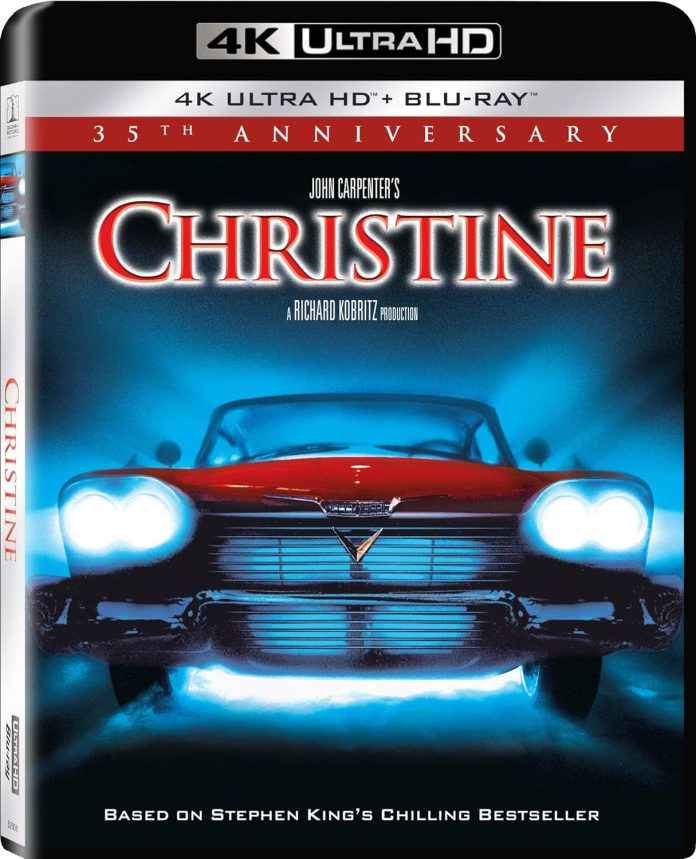When I first sat down to watch Christine, the 1983 film directed by John Carpenter, I wasn’t entirely sure what to expect. Based on Stephen King’s novel of the same name, this movie has cemented its status as a cult classic in the horror genre. I was curious to see how Carpenter, known for his innovative approach to horror, would bring King’s chilling tale of obsession and revenge to the screen. In this review, I will delve into the film’s themes, direction, performances, and overall impact, providing insights that may inspire you to revisit or discover this iconic film.
Plot Overview
Christine follows the story of a 1958 Plymouth Fury that possesses a sinister life of its own. The film centers on a high school outcast named Arnie Cunningham, portrayed by Keith Gordon. Arnie’s life takes a dramatic turn when he stumbles upon Christine, the vintage car that becomes the object of his obsession. As Arnie fixes up Christine, he transforms from a shy, bullied teenager into a more confident, yet dangerously unstable individual. The car, seemingly alive, feeds off Arnie’s emotions, leading to violent confrontations and tragic consequences.
Themes of Obsession and Identity
One of the most compelling aspects of Christine is its exploration of obsession and identity. Arnie’s transformation is not just about a car; it symbolizes the struggle many face during their formative years when they seek acceptance and self-identity. The film invites viewers to ponder the lengths to which one will go to attain their desires, highlighting how obsession can lead to destructive behaviors.
As I watched Arnie’s character evolve, I couldn’t help but reflect on my own experiences with obsession—whether it be over a relationship, a hobby, or even a possession. The film effectively captures that feeling of losing oneself in something external, and how that can sometimes have dire consequences.
Direction and Cinematography
John Carpenter’s direction in Christine is masterful. Known for his ability to create tension and atmosphere, Carpenter employs a range of techniques that enhance the film’s horror elements. The use of lighting and shadow plays a significant role in building suspense, especially during the car’s most ominous moments. The cinematography captures the essence of the 1980s while also giving the film a timeless quality that still resonates with audiences today.
The film’s pacing is another highlight. Carpenter knows when to draw out a scene for maximum tension and when to unleash the horror, ensuring that viewers remain engaged throughout. The blend of horror and dark humor is expertly balanced, providing relief from the tension without undermining the film’s serious themes.
Performances
The performances in Christine are noteworthy, particularly that of Keith Gordon as Arnie Cunningham. Gordon’s portrayal of Arnie’s descent into madness is both compelling and believable. He captures the character’s initial innocence and subsequent transformation with nuance, making the audience empathize with his plight even as he becomes increasingly unhinged.
Alexandra Paul, who plays Arnie’s love interest, Leigh, delivers a solid performance as well. Her character serves as a grounding force amid Arnie’s spiraling descent into obsession. The dynamic between Arnie and Leigh showcases the struggles of young love, making the horror elements even more poignant.
Additionally, the supporting cast, including John Stockwell as Arnie’s friend Dennis and Robert Prosky as the car dealer, adds depth to the film. Each character plays a crucial role in driving the narrative forward and illustrating the impact of Arnie’s obsession on those around him.
The Role of Music and Sound
No review of a John Carpenter film would be complete without mentioning the iconic score. Carpenter’s musical compositions are integral to Christine, heightening the sense of dread and anticipation throughout the film. The pulsating synth-heavy score is both memorable and atmospheric, perfectly complementing the film’s visual elements.
Sound effects also play a significant role in building tension. The growl of Christine’s engine and the screeching of tires during the film’s intense chase scenes immerse viewers in the experience, making them feel as though they are right there alongside Arnie in his harrowing journey.
Legacy and Impact
Christine has undoubtedly left a mark on the horror genre and continues to influence filmmakers today. Its unique premise of a haunted car challenges traditional horror tropes and demonstrates how everyday objects can become sources of terror. The film also serves as a reminder of Stephen King’s profound ability to tap into the fears and obsessions that lie within us all.
For those who appreciate horror that delves into psychological themes, Christine is a must-watch. It reminds us that obsession can blur the lines between love and hate, and that sometimes what we desire most can lead to our downfall.
Conclusion
In conclusion, Christine is a masterful blend of horror, psychological drama, and dark humor. John Carpenter’s direction, combined with strong performances and a haunting score, creates an engaging viewing experience that lingers long after the credits roll. As I reflect on the film, I find it serves as a powerful commentary on the dangers of obsession and the search for identity.
Whether you’re a long-time fan of horror films or new to the genre, Christine deserves a place on your watchlist. Its exploration of the darker aspects of human nature makes it a timeless classic that continues to resonate with audiences today.
Internal Links
External Links
By engaging with these elements, I hope to encourage you to not only watch Christine but also to reflect on its themes and the artistry behind its creation. Horror can be a powerful lens through which we examine our own lives and fears, and Christine is a prime example of that.
<iframe width="560" height="315" src="https://www.youtube.com/embed/ieBmy6qjiCI?si=cpNABjXqCykyPeQs" title="YouTube video player" frameborder="0" allow="accelerometer; autoplay; clipboard-write; encrypted-media; gyroscope; picture-in-picture; web-share" referrerpolicy="strict-origin-when-cross-origin" allowfullscreen></iframe>




.jpg?w=100&resize=100,70&ssl=1)
